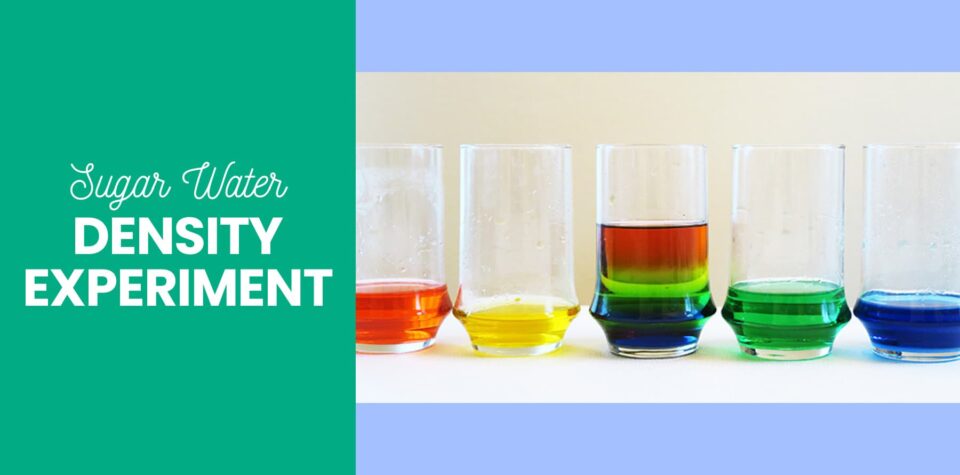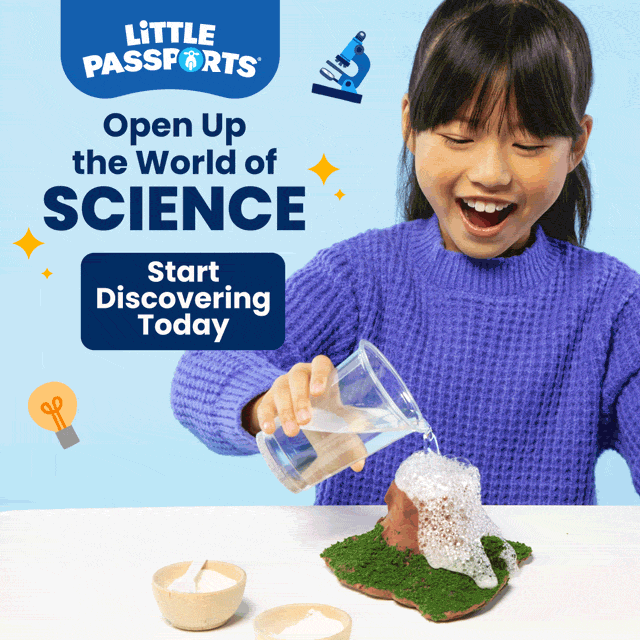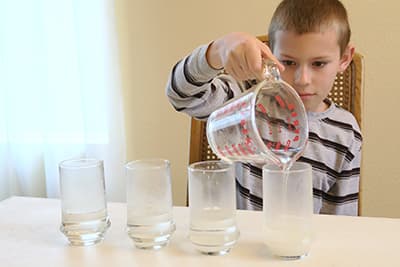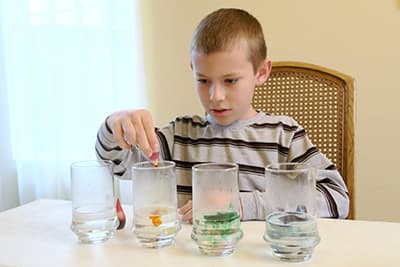
Sugar Water Density Experiment
What happens when you combine blue, green, yellow, and red water in a single glass? Brown, right? Not necessarily! Make this mesmerizing rainbow in a glass by experimenting with water density.

Density measures the amount of mass in a particular space. For example, oil molecules are packed less tightly than water molecules, making oil less dense than water and causing it to float on top when the two are combined. Water can have different densities as well. An easy way to change water density is with sugar. When you mix sugar with water, the sugar molecules occupy the space between the water molecules, making the solution more tightly packed (denser). The more sugar you add, the denser the solution.
In this sugar water density experiment, we will change the density of different colored water solutions so that they stay separated from each other. All you need are a few common household items.

Supplies
- 5 drinking glasses
- Warm water
- Sugar
- Spoon
- Food coloring in four different colors
- Small turkey baster

How to Conduct the Sugar Water Density Experiment
1. Fill four drinking glasses with 1/4 cup of warm water each.
2. Add sugar and food coloring to the water. Each color will have a different amount of sugar in it.
Glass 1: Add 1 tablespoon of sugar and 2 drops of red food coloring. Stir vigorously to completely dissolve the sugar.
Glass 2: Add 2 tablespoons of sugar and 2 drops of yellow food coloring. Stir vigorously.
Glass 3: Add 3 tablespoons of sugar and 2 drops of green food coloring and stir.
Glass 4: Add 4 tablespoons of sugar and 2 drops of blue food coloring and stir.
NOTE: Stirring to completely dissolve the sugar is very important. Without the sugar fully incorporated into the water, you’ll have trouble getting the colors to separate. Heat up your water if it’s not working—five to 10 seconds in the microwave and an extra stirring session should help.

3. Use the turkey baster to transfer about half of the blue water into the empty glass. This is where you’ll make your rainbow.
4. Still using the baster, transfer half the green water into the rainbow glass. Add it slowly on top of the blue water. It should sit on top.
5. Add the yellow, and then the red. You’ll see a beautiful rainbow!
NOTE: Make sure the sugar is completely dissolved before attempting to layer the colors—it’s what creates the difference in density of each color.

Bring on the Science!

During this activity, natural questions may come up. If they don’t, start a discussion using the questions below!
- Why is density important?
- Density helps us predict whether something will sink or float. Density is super important to consider when building things like ships or submarines.
- Where can I find density in action?
- Think about swimming. Did you know that it’s easier to float in the ocean than in a pool? That’s because ocean water is denser than pool water, due to the high salt concentration in the ocean.
If your child was enthralled by this experiment, they’ll love our Science Expeditions subscription!
